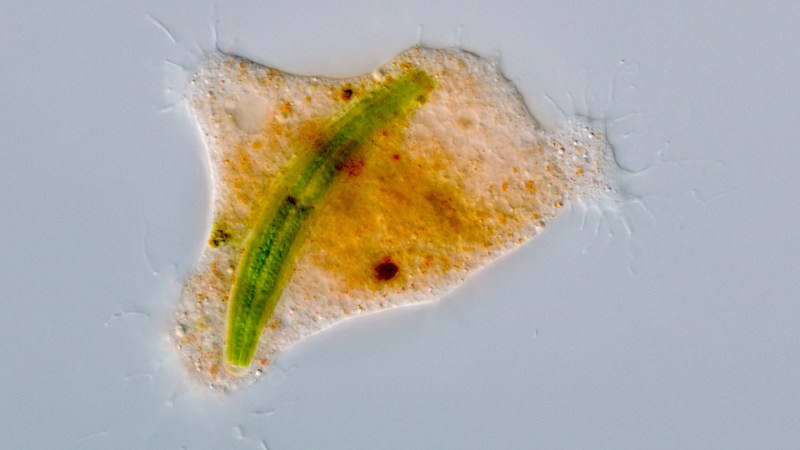A microbial predator that stalks the waters of the German countryside envelopes its victims and leaves their empty husks behind. The predator — a newfound amoeba dubbed Strigomyxa ruptor — feeds like no other protist, researchers report in the August Ecology and Evolution.
Protozoologists Andreas Suthaus and Sebastian Hess of the University of Cologne in Germany were hunting vampires — microscopic ones, at least. Vampyrellid amoebas eat holes in the cell walls of algae and slurp up the insides (SN: 11/2/15). Looking to understand the protists’ biological diversity, the researchers took water samples from ponds and wetlands near Cologne.
Under the microscope, one water-filled petri dish was teeming with round, reddish, immobile blobs — what vampyrellids look like after feeding. But nearby algae lacked telltale feeding holes.
Time-lapse photography confirmed the amoebas were vampyrellids. But they didn’t feed like other microscopic vampires. The unicellular blobs engulfed and split apart Closterium algae cells, sucking out the insides and tossing the rest.
“We just couldn’t believe it at first,” Suthaus says. “Of course, the question becomes, well, how exactly do [the amoebas] do it?”
Feeding experiments revealed that S. ruptor keeps engulfed algae in a special compartment. Enzymes in this chamber appear to dissolve one side of the prey’s cell wall. The other side is attached to the chamber wall. As the compartment expands, the algae cell swings open like a shelled pistachio. S. ruptor then reaches into itself to scoop up its meal, bundling up and spitting out the empty cell wall.
The odd vampyrellids belong to a previously undescribed genus and species, a genetic analysis suggests. The genus name Strigomyxa, which derives from the ancient Greek words for owl and mucus or slime, is a nod to the microbe’s owllike regurgitation behavior.
“When you see similar pellet-casting in a lot of other organisms, they have multiple cells that fulfill multiple functions. And this is a single cell doing this type of mechanistic action,” Suthaus says. “It tells us about the ingenuity of evolution.”


